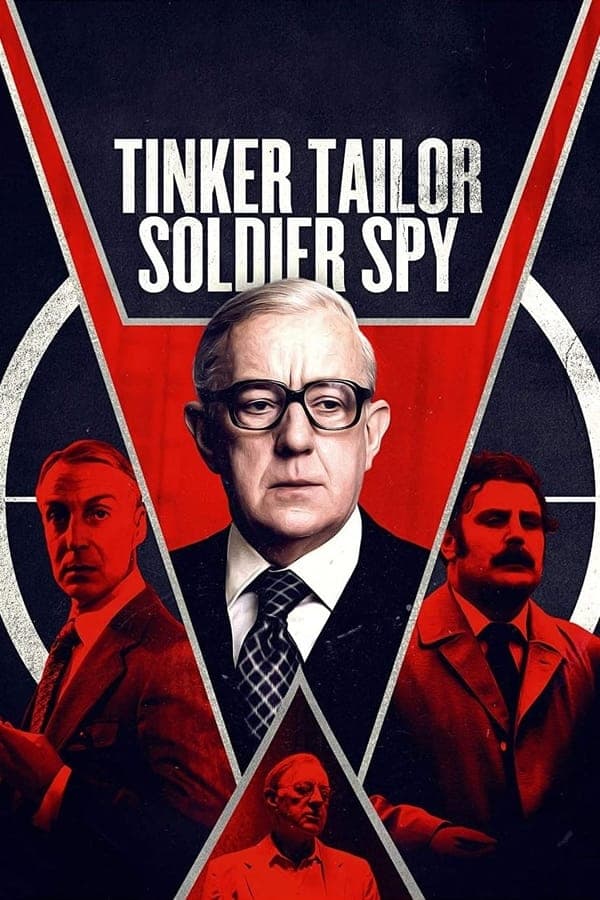
Tinker Tailor Soldier Spy
1979 • Drama, Mystery, War & Politics • TV-14
George Smiley, the aging master spy of the Cold War and once heir apparent to Control, is brought back out of retirement to flush out a top level mole within the Circus. Smiley must travel back through his life and murky workings of the Circus to unravel the net spun by his nemesis Karla 'The Sandman' of the KGB and reveal the identity of the mole before he disappears.
Why you should read the novel
Reading John le Carré's Tinker Tailor Soldier Spy immerses you directly in the intricate psychology of the British intelligence world. The novel’s subtle prose and profound character exploration draw you much deeper into the mind of George Smiley, the aging spy tasked with unmasking a Soviet mole. Through Smiley's perspective, you enjoy access to layers of personal history and delicate motivations not fully expressed on screen.
The novel offers a level of detail and context that the series, due to time constraints, simply cannot provide. Internal monologues and richly described settings allow you to piece together clues alongside Smiley, emphasizing the complexity of espionage work. This literary journey enhances your appreciation of the betrayals, loyalties, and shifting alliances pivotal to the story.
Furthermore, le Carré's craftsmanship with language and atmosphere sets the gold standard for spy fiction. His portrayal of Cold War tensions and shadowy intelligence circles are best experienced firsthand through his writing. If you want the full depth and nuance behind the TV series, the original book is an absolute must-read.
Adaptation differences
One major difference between the TV adaptation and the novel is the level of internal access to George Smiley’s thoughts and motivations. In the book, readers are privy to Smiley’s internal dilemmas, memories, and emotional struggles, providing a richer psychological portrait. The TV series, by contrast, often relies on Alec Guinness's subtle facial expressions and minimal dialogue, which, while powerful, cannot capture the full depth of Smiley’s inner world.
Another significant change is in the pacing and breadth of information shared. The novel delves deeply into the bureaucratic and historical background of 'The Circus' and its members, detailing events from multiple perspectives. The TV series streamlines these elements for clarity, sometimes omitting or condensing scenes that in the novel provide critical context or elaborate on secondary characters’ backgrounds.
The adaptation also modifies or omits several characters and subplots. While most principal characters remain, supporting figures are sometimes merged or their roles reduced to keep the narrative focused. This can mean the loss of certain character arcs or nuanced relationships that provide additional layers of intrigue in the book.
Finally, the series presents events chronologically and visually clarifies certain plot points that are left more ambiguous in the novel. Le Carré’s original narrative often unfolds out of order, requiring the reader to assemble the mystery through flashbacks and fragmented accounts, making discovery a participatory process. Watching the series can clarify plot complexities, but it bypasses the suspenseful detective work that defines the reading experience.
Tinker Tailor Soldier Spy inspired from
Tinker Tailor Soldier Spy
by John le Carré


